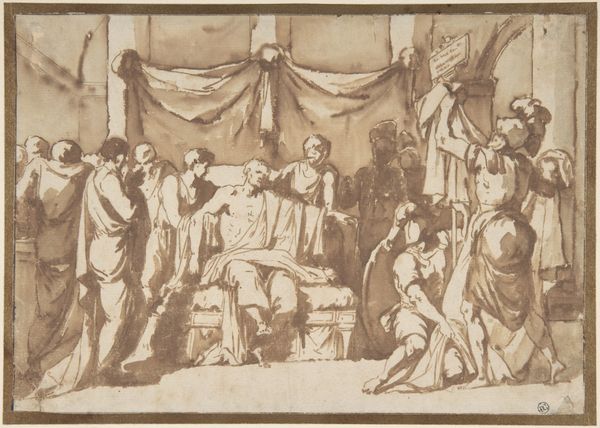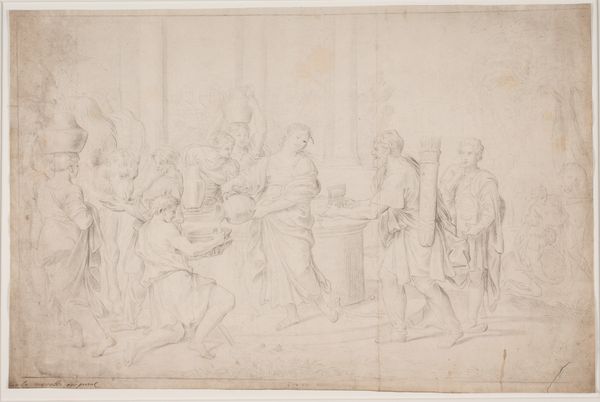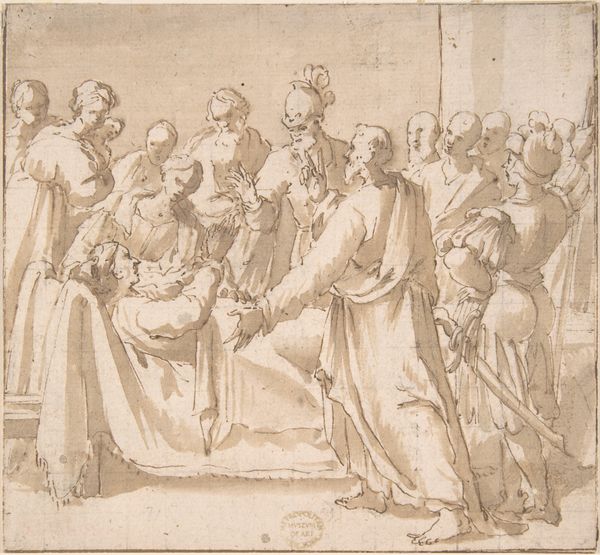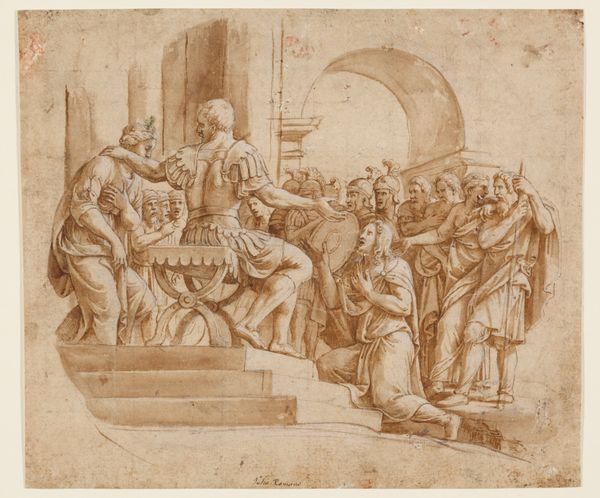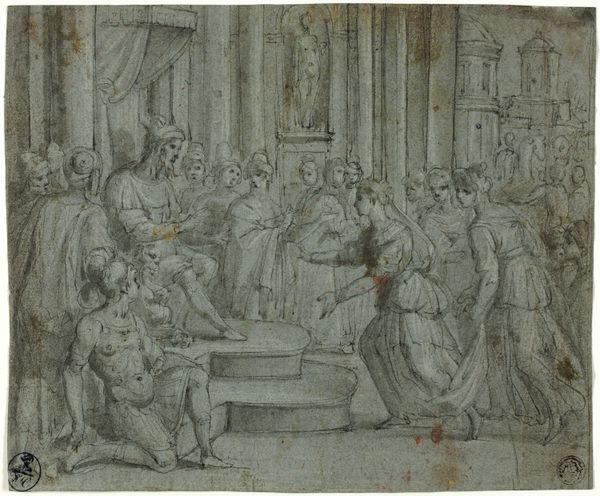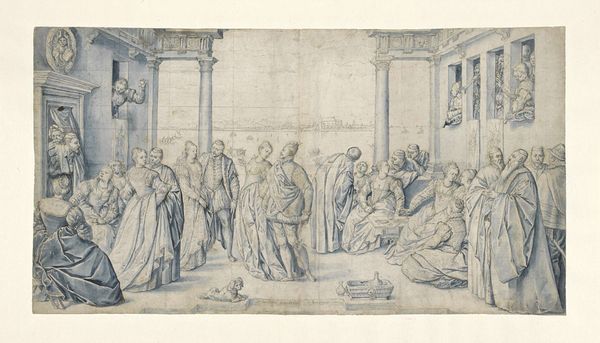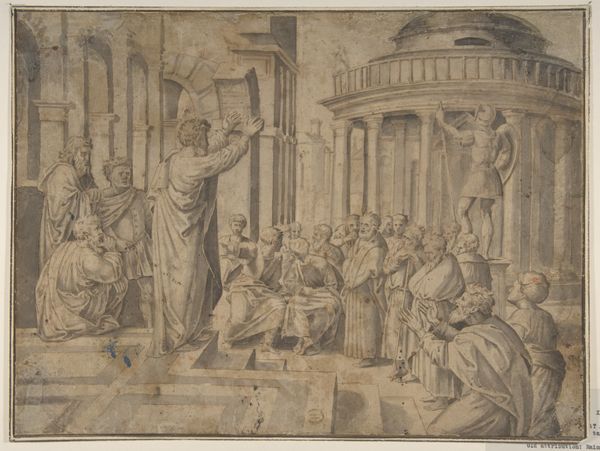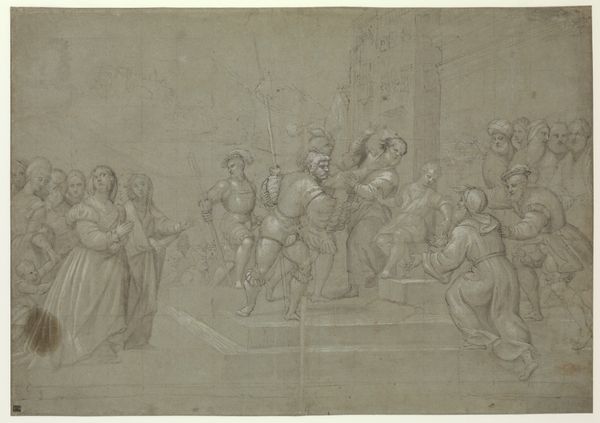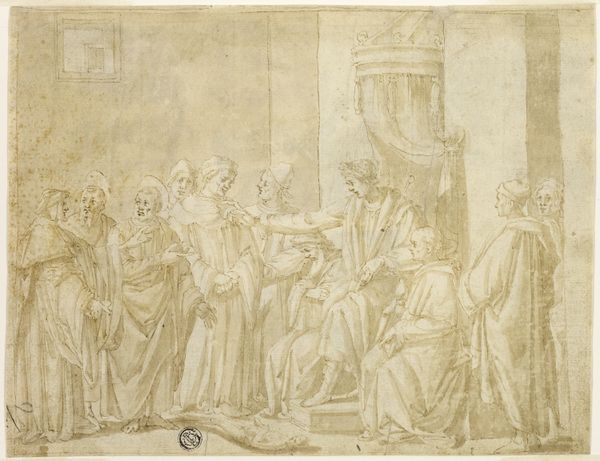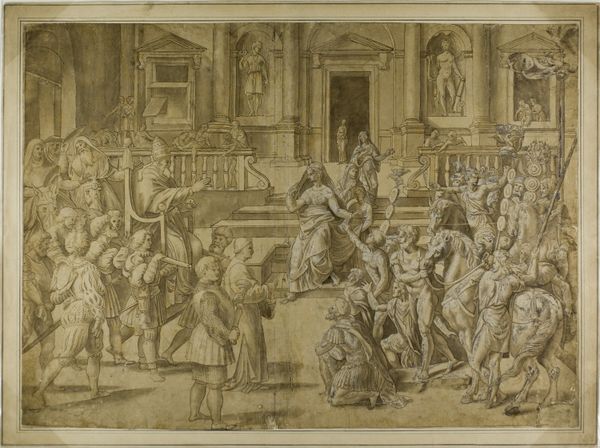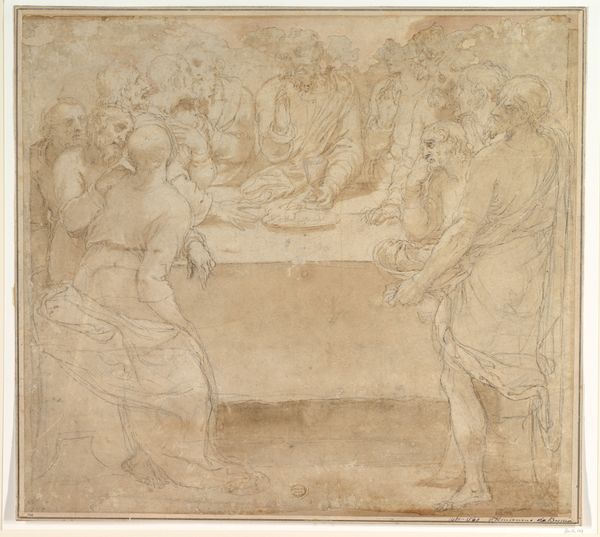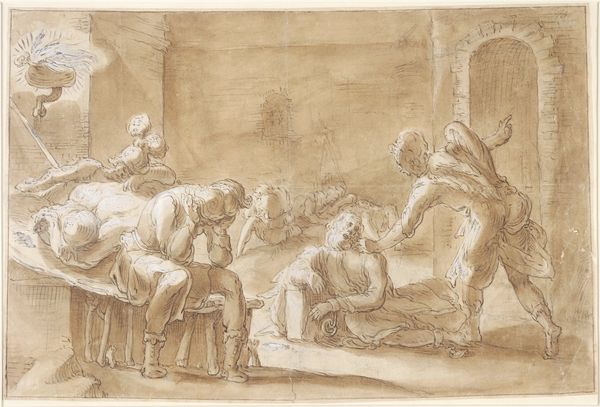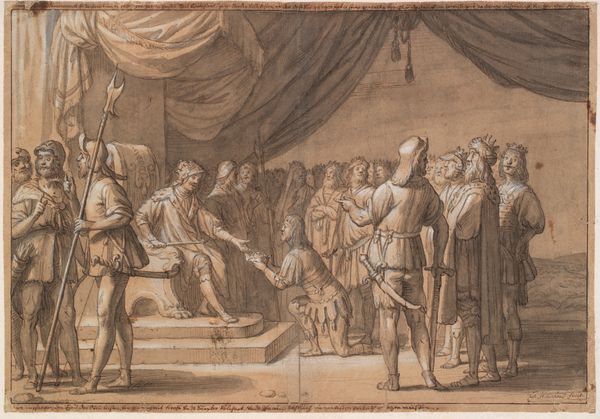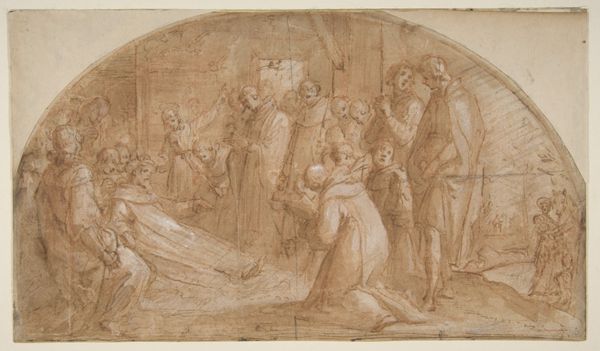
Penitent Woman Anointing the Feet of Christ at the Table of Simon the Pharisee (Luke 7:36-50) 1511 - 1551
0:00
0:00
drawing, print, paper, ink, charcoal
#
drawing
#
narrative-art
# print
#
charcoal drawing
#
figuration
#
paper
#
oil painting
#
ink
#
men
#
charcoal
#
italian-renaissance
#
christ
Dimensions: 9 3/16 x 15 1/16in. (23.3 x 38.3cm)
Copyright: Public Domain
Editor: This drawing, titled "Penitent Woman Anointing the Feet of Christ at the Table of Simon the Pharisee," is attributed to Biagio Pupini, dating from the first half of the 16th century. Executed in charcoal, ink and wash on paper, it depicts a biblical scene. The atmosphere feels quite solemn, almost stark in its composition. What stands out to you when you look at this image? Curator: Immediately, I’m struck by the symbolic weight carried by the figures' gestures and positioning. The kneeling woman, lower than the seated Christ, speaks volumes about repentance and humility. The table creates a divide— an almost ritual space. Consider also, who are all these other people, sitting high at the table like a jury? What judgment and memory is implicit in their being there, in that space? What do you read in their averted gazes? Editor: That’s interesting. I hadn’t thought of them as being judgmental, but now that you point it out, their expressions do seem rather...disapproving. How does that affect the narrative for you? Curator: It complicates it. This isn’t just about forgiveness, but about social acceptance and the challenging of societal norms. Remember, in Renaissance art, even seemingly minor details—a glance, a hand gesture—could carry profound significance. Perhaps this work is prompting us to reconsider who gets a seat at the table, literally and figuratively. What meaning do you get from the light ink, giving it almost an unfinished feeling? Editor: Maybe the sketch-like quality adds to the vulnerability of the scene. It's like the moment is still unfolding, the judgement not yet final. It definitely gives you more to think about than I initially realised. Curator: Precisely! It's through these symbolic layers that Renaissance art continues to resonate across centuries. It is also fascinating how we both viewed these symbols differently, initially.
Comments
No comments
Be the first to comment and join the conversation on the ultimate creative platform.
